How Mixed Reality is shaping tomorrowBlog
Merging reality and fiction has been a constant human struggle.
Science Fiction, Psychedelia, Transcendental Meditation, are all early efforts to unveal the unreal into our mundane existence.
Today’s technology is making this dream safe and achievable — not only for the dreamers among us.
But let’s take a step back. How do we define Mixed Reality?
It all comes back to a 1994 research paper by Paul Milgram and Fumio Kishino entitled “A Taxonomy of Mixed Reality Visual Display”.
In that paper they introduced the term “Mixed Reality” along with the concept of the Reality-Virtuality continuum.
How does it work? Imagine a line with two extremes: real environment on one end and virtual environment on the other end.
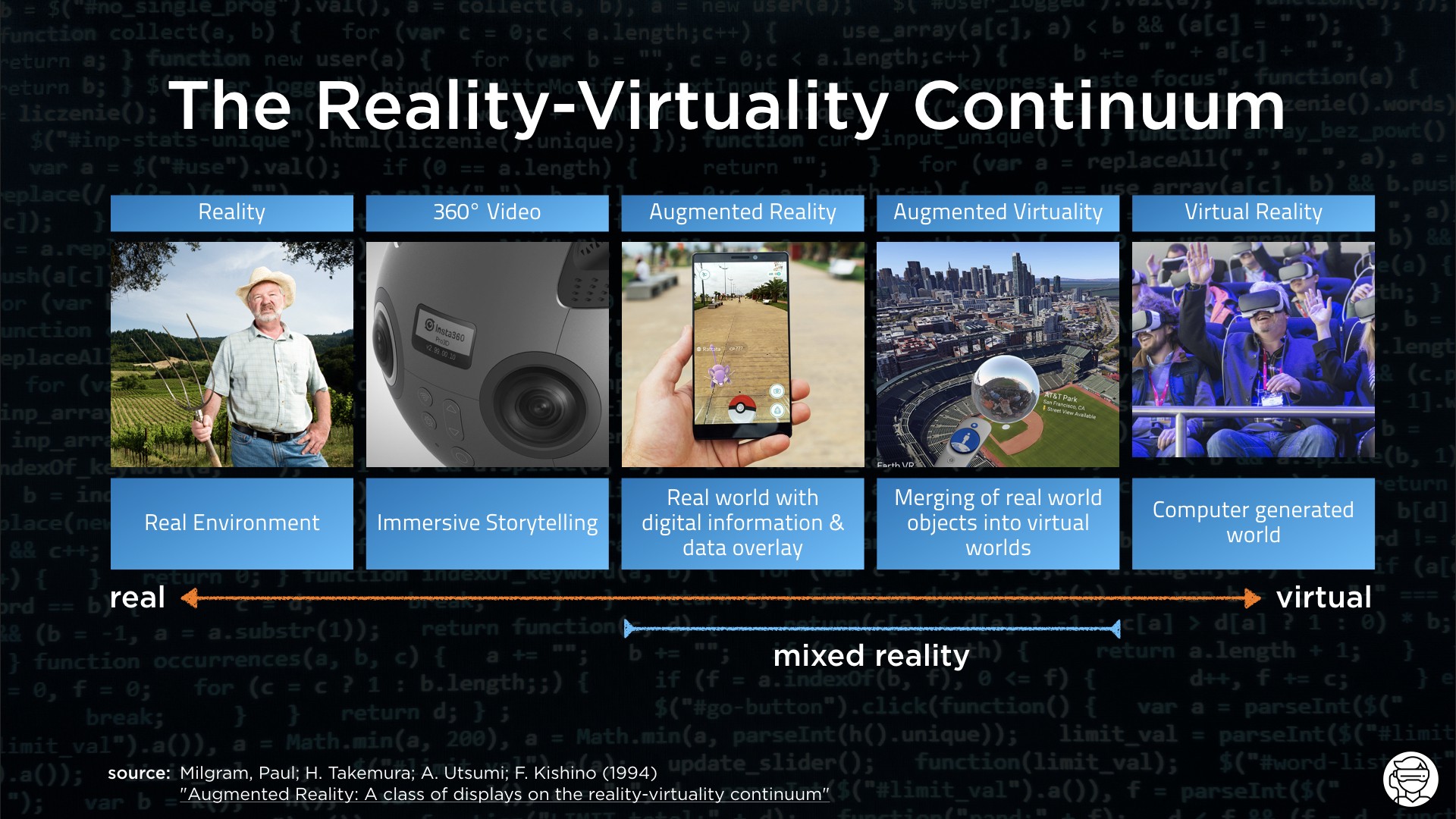
The most straightforward way to view a Mixed Reality environment, therefore, is one in which real world and virtual world objects are presented together within a single display, that is, anywhere between the extrema of the virtuality continuum.
The concept of Reality is pretty straightforward. It is whatever we can perceive with our five methods of perception: taste, sight, touch, smell and sound, without any digital intermediation.
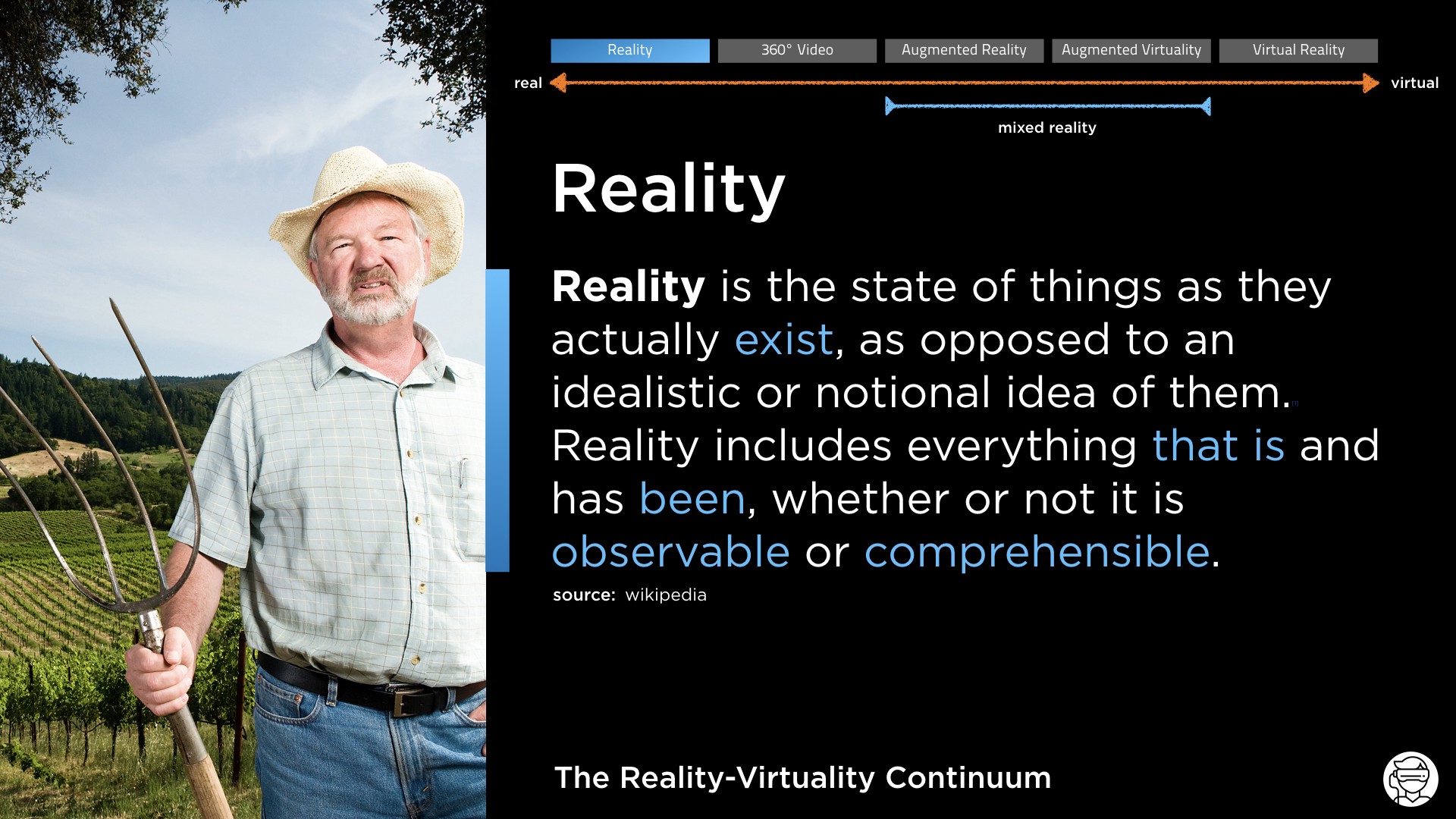
Virtual Reality is on the opposite side of this line. It is an artificially created sensory experience of people, environments and objects, which can be perceived with our five senses. It is usually made with real-time CGI, since the user can interact with the scene, up to a certain extent.
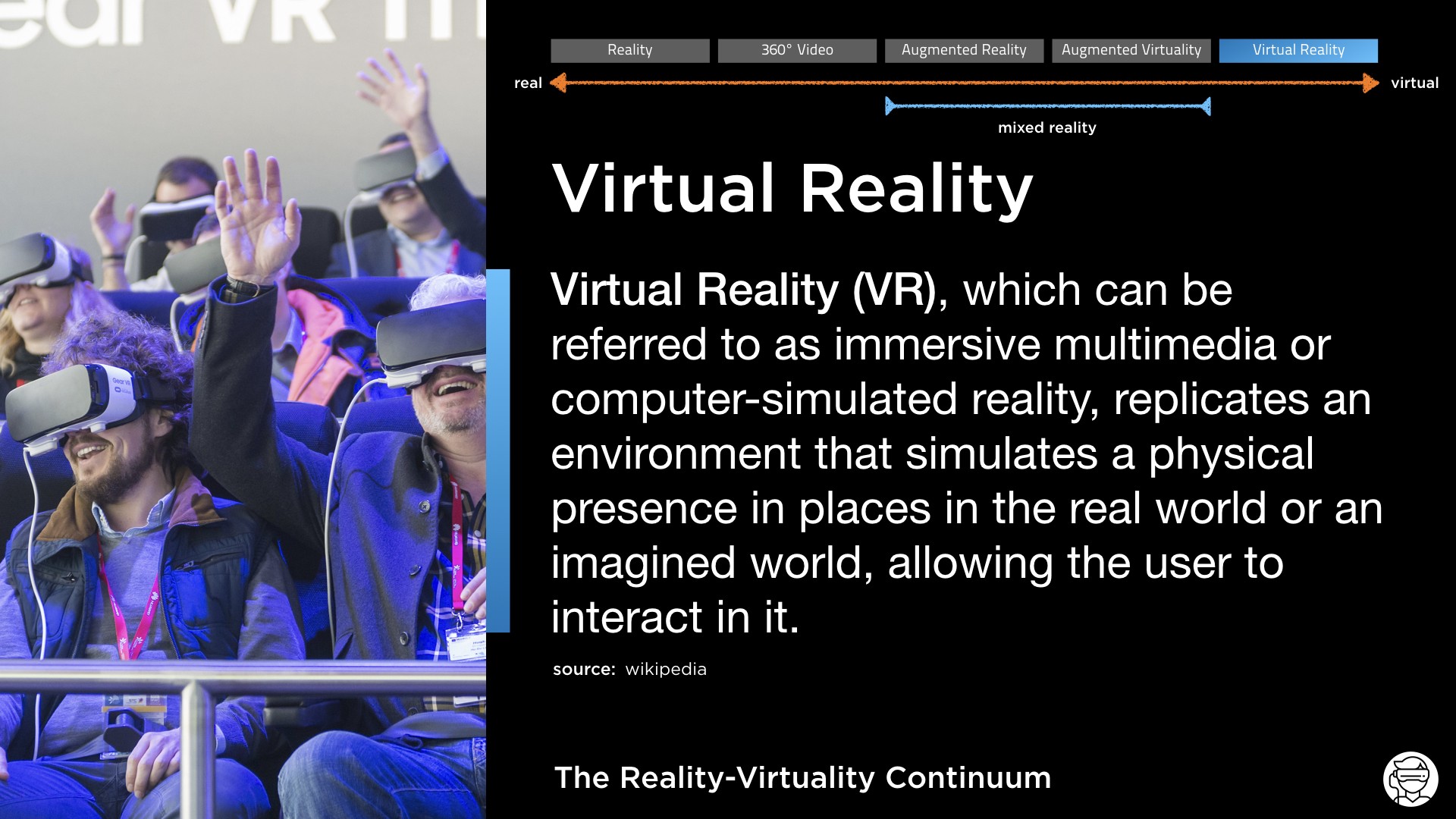
360° Video is often mislabeled as “VR”, but it’s a marketing stunt — and a dangerous misconception. In fact immersive video it is more near to the “Reality” side of the spectrum, being a snapshot of a real scenario, although mediated by a 360° camera, and possibly part of an immersive storytelling.
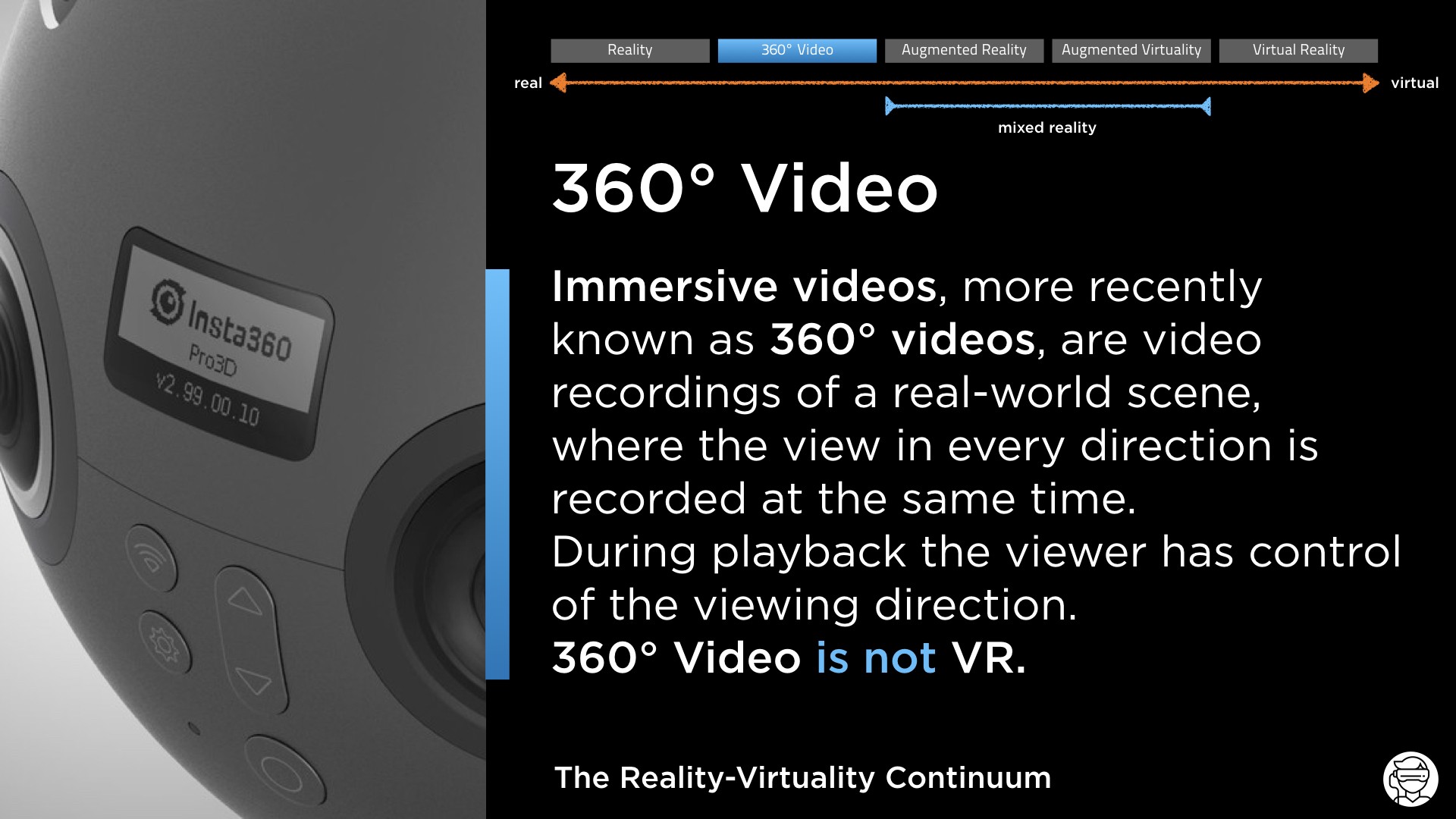
Now let’s address the middle part of the reality-virtuality continuum.
Mixed Reality is the space in between when real world elements start to mix with virtual ones.
Let split this into two flavors: Augmented Reality, where we bring in some virtual elements into our real world, and Augmented Virtuality, where we bring some real elements in our virtual world.
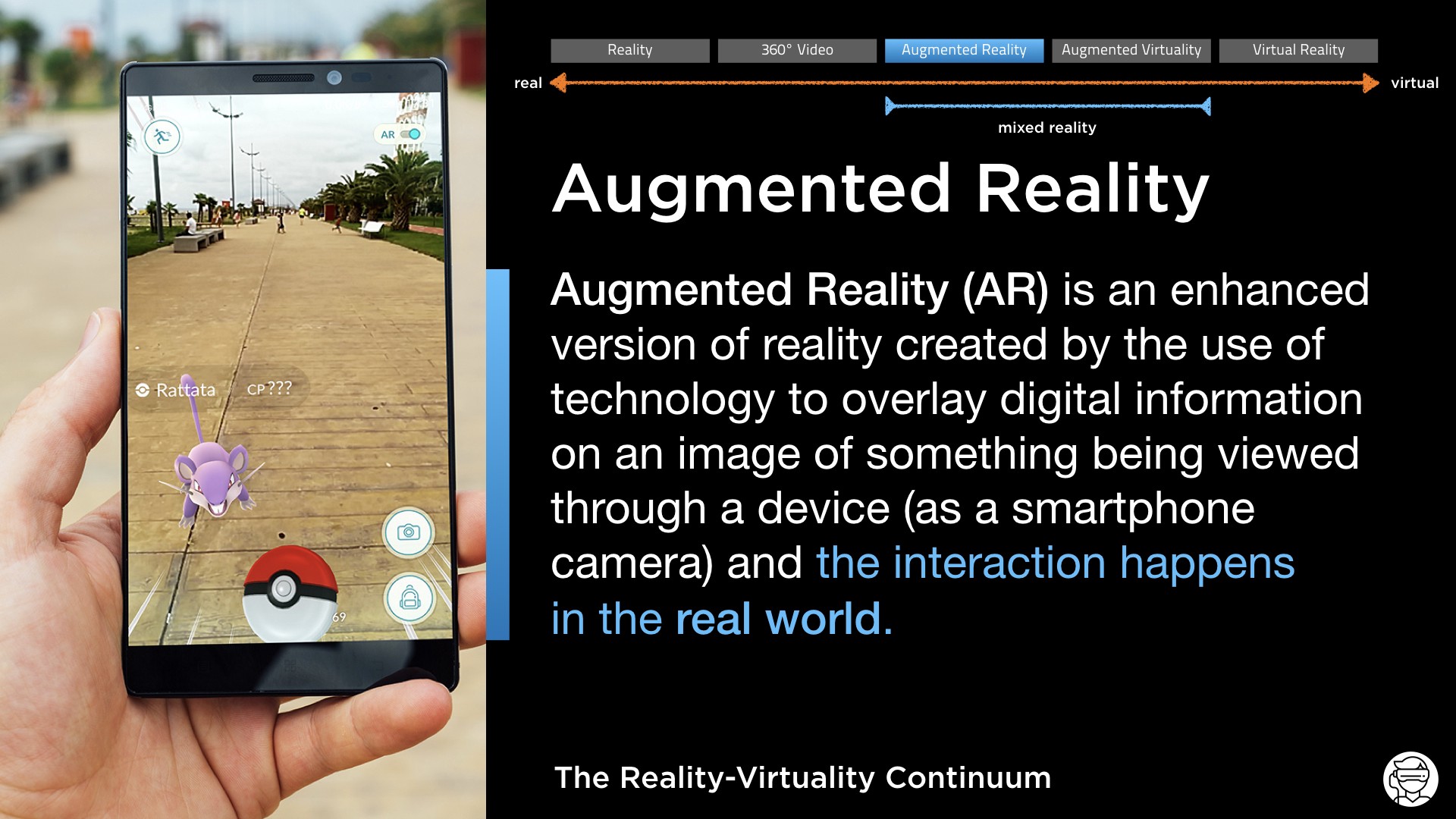
Heads up displays in cars, Google Glass, Snapchat filters, Pokemon GO’s AR view, Google Tango, mobile AR apps and Microsoft’s HoloLens are all examples of Augmented Reality of varying degrees.
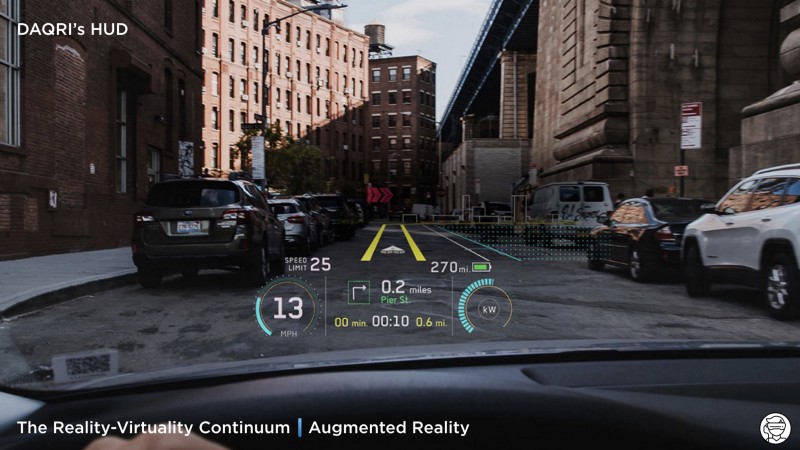

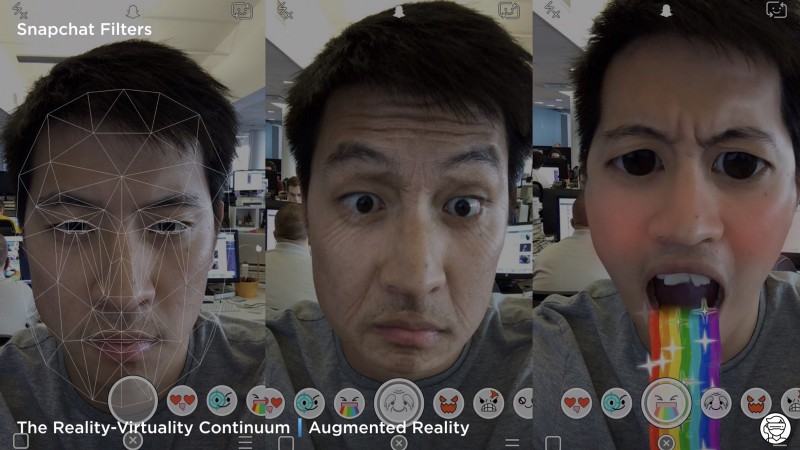
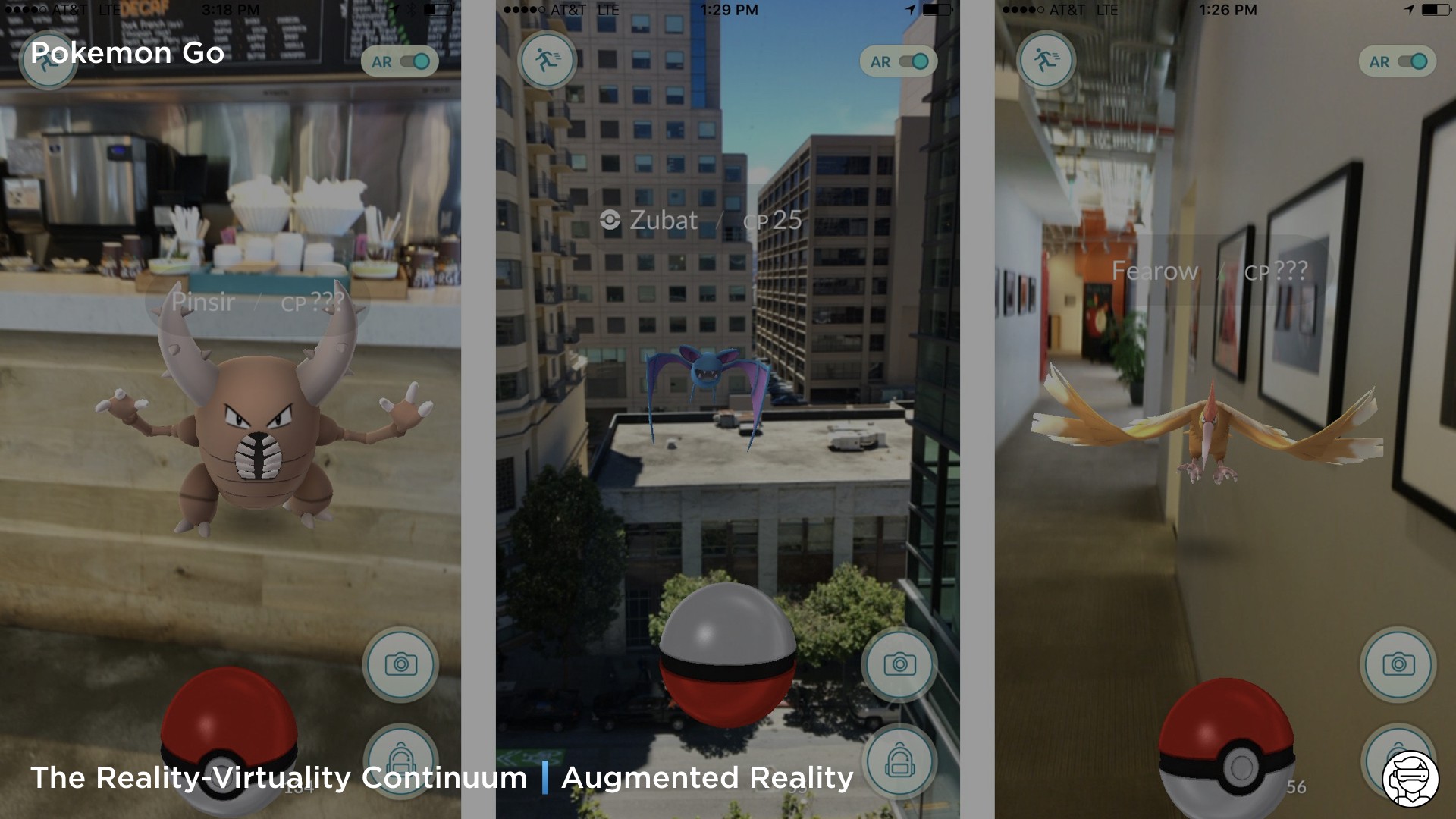
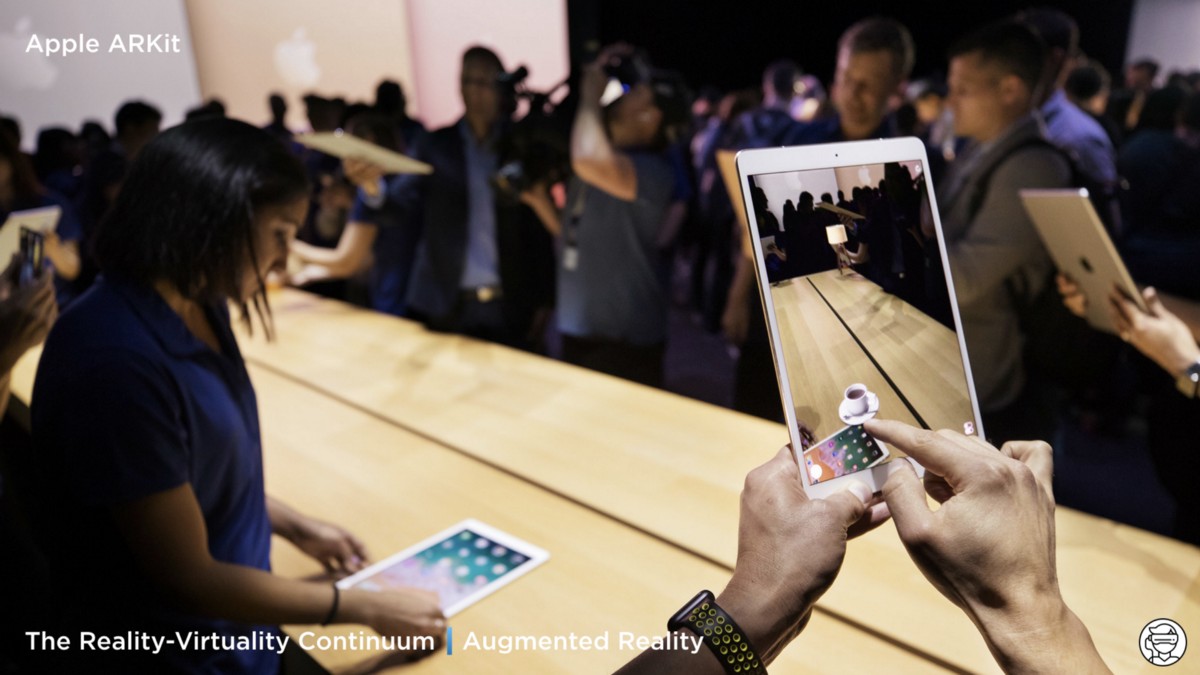
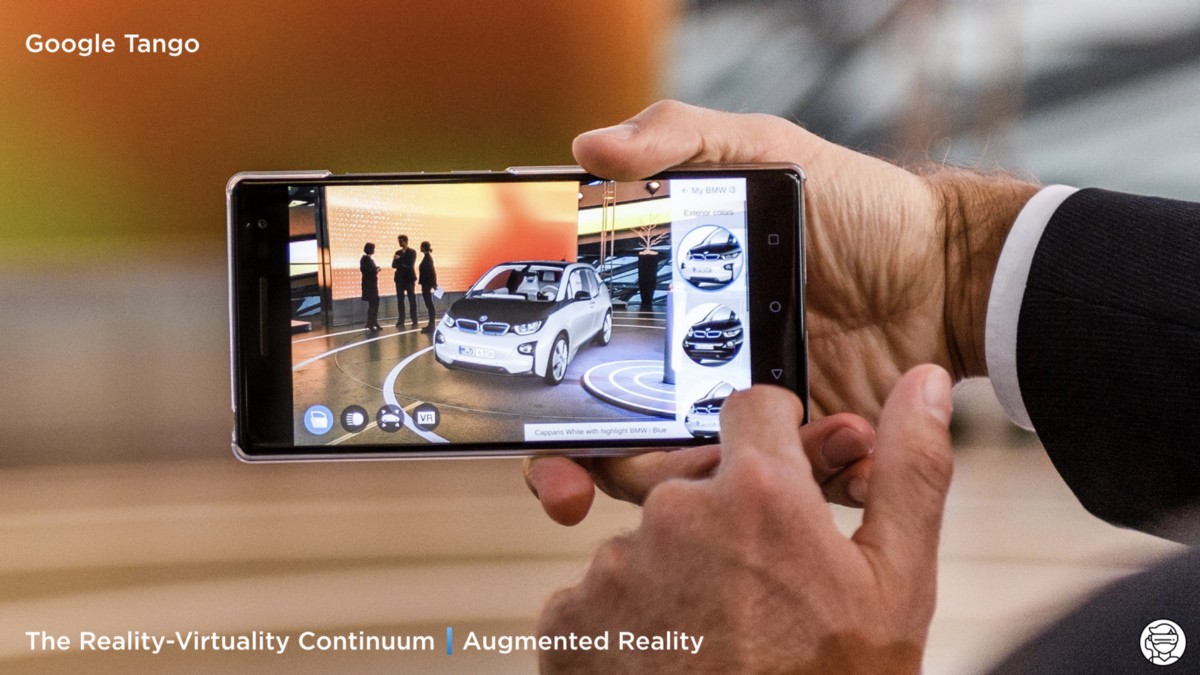
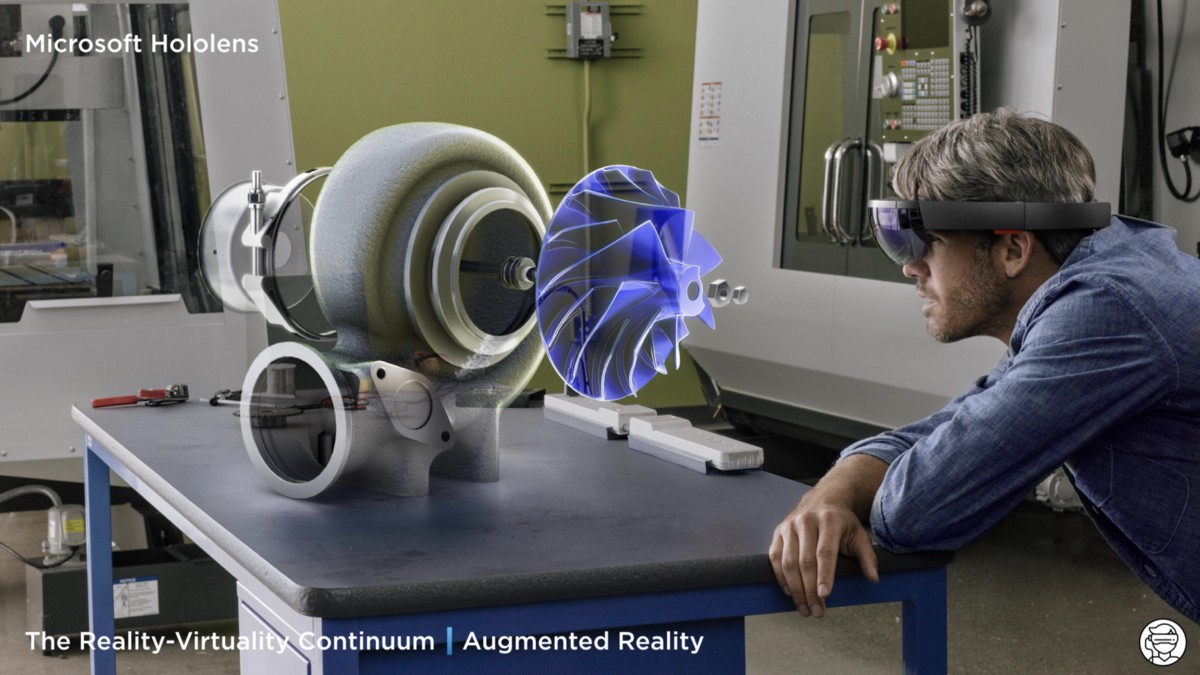
Augmented Virtuality occurs in a virtual environment. This is a term that isn’t often used, but involves environments where a virtual world has some real world elements within it.
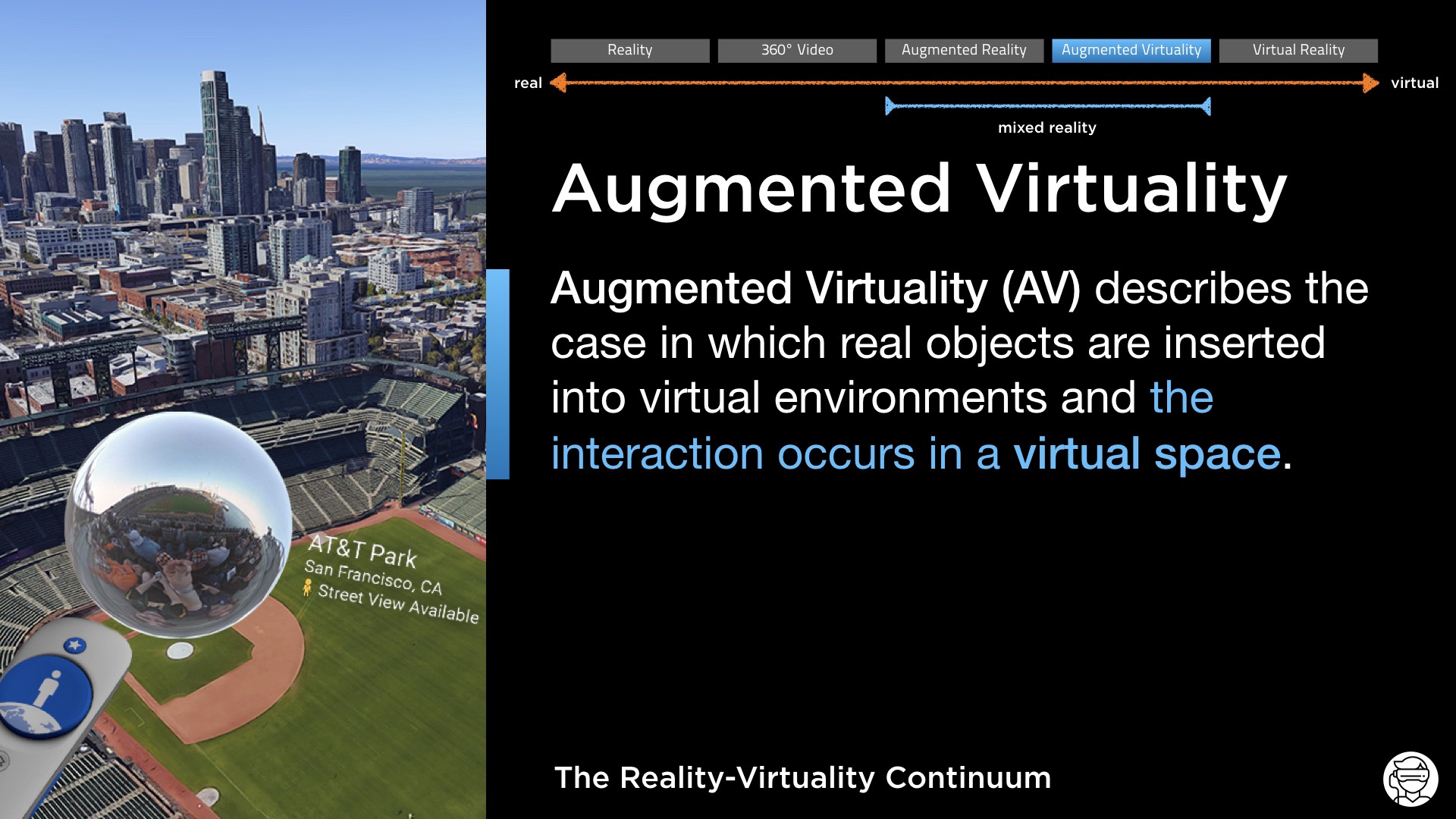
Some examples includes Google Earth VR, Intel Project Alloy — now canceled, VizRT, and a Digital Twin where an aircraft maintenance engineer is able to visualize a real time model of an engine in flight thousands of miles away.

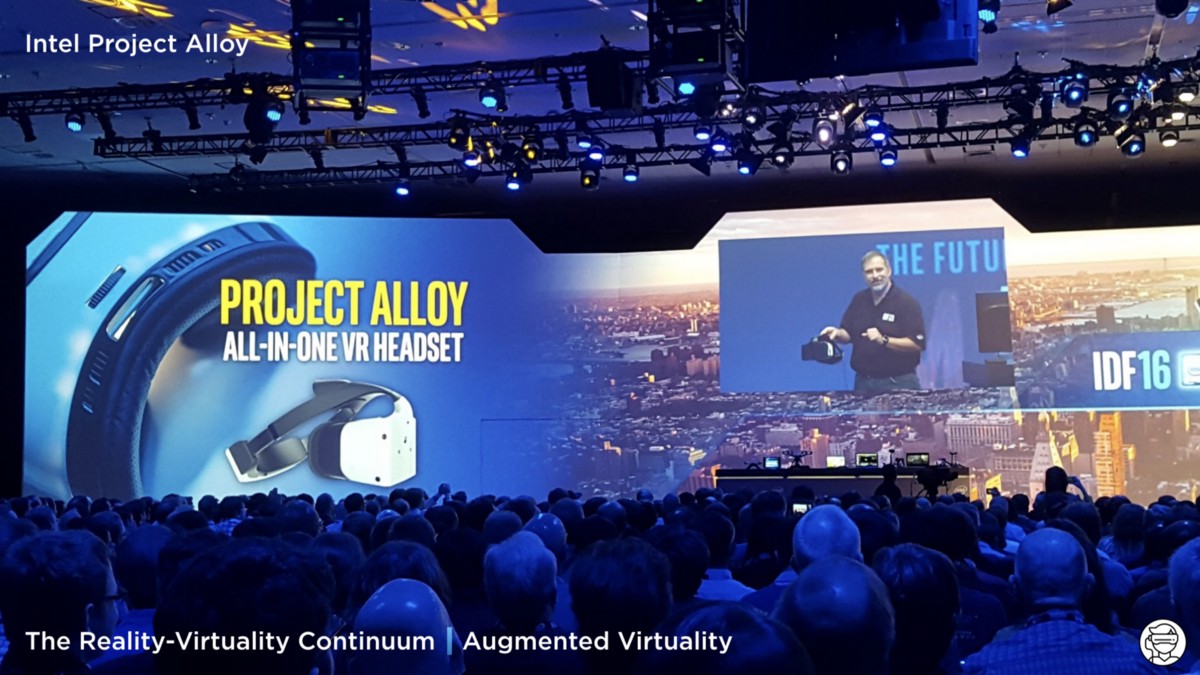
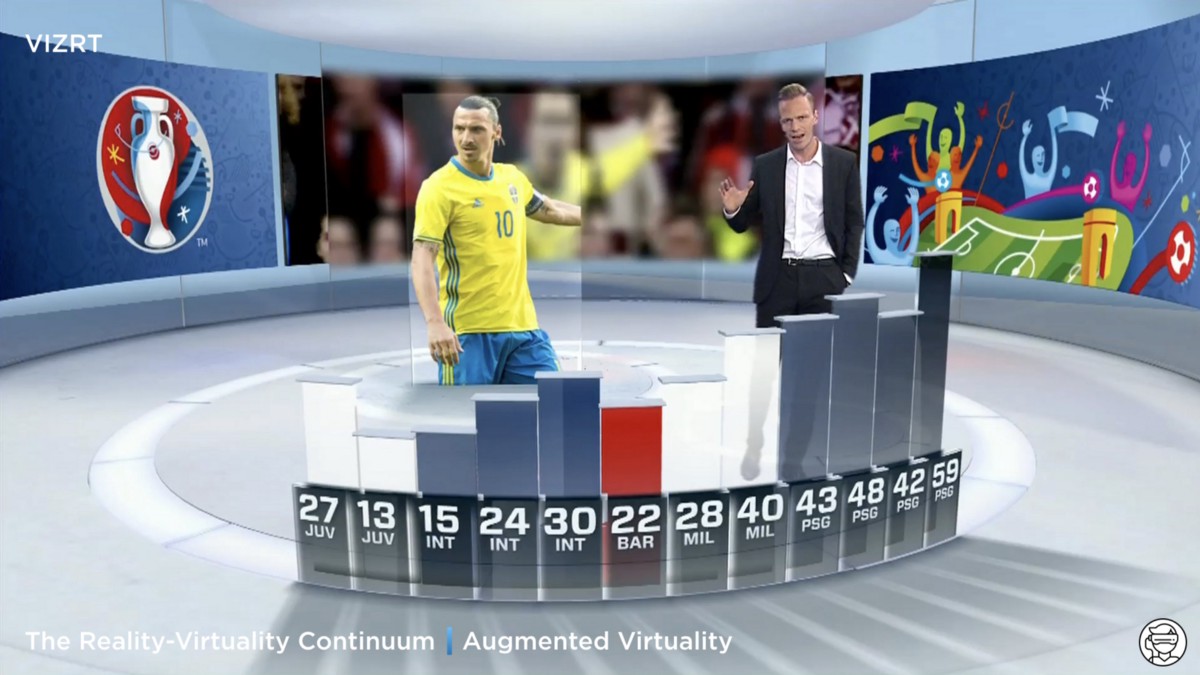
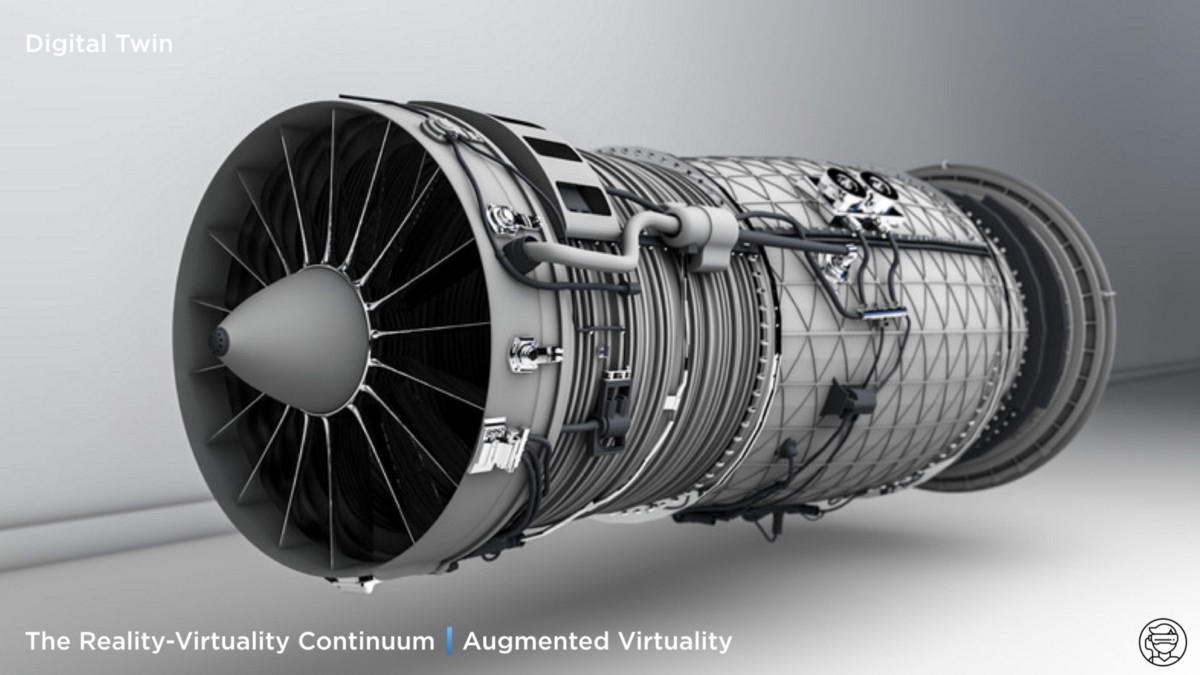
Then, there is Microsoft very own definition of Mixed Reality.
https://www.youtube.com/watch?v=0AWhsBNU1jU
Initially Microsoft just wanted to try to describe occlusion of AR by real world objects, using their sensor array, by calling it mixed reality.
Then they tried to extend it to their VR headsets, perpetuating the misunderstanding that its a catch all phrase for AR + VR.
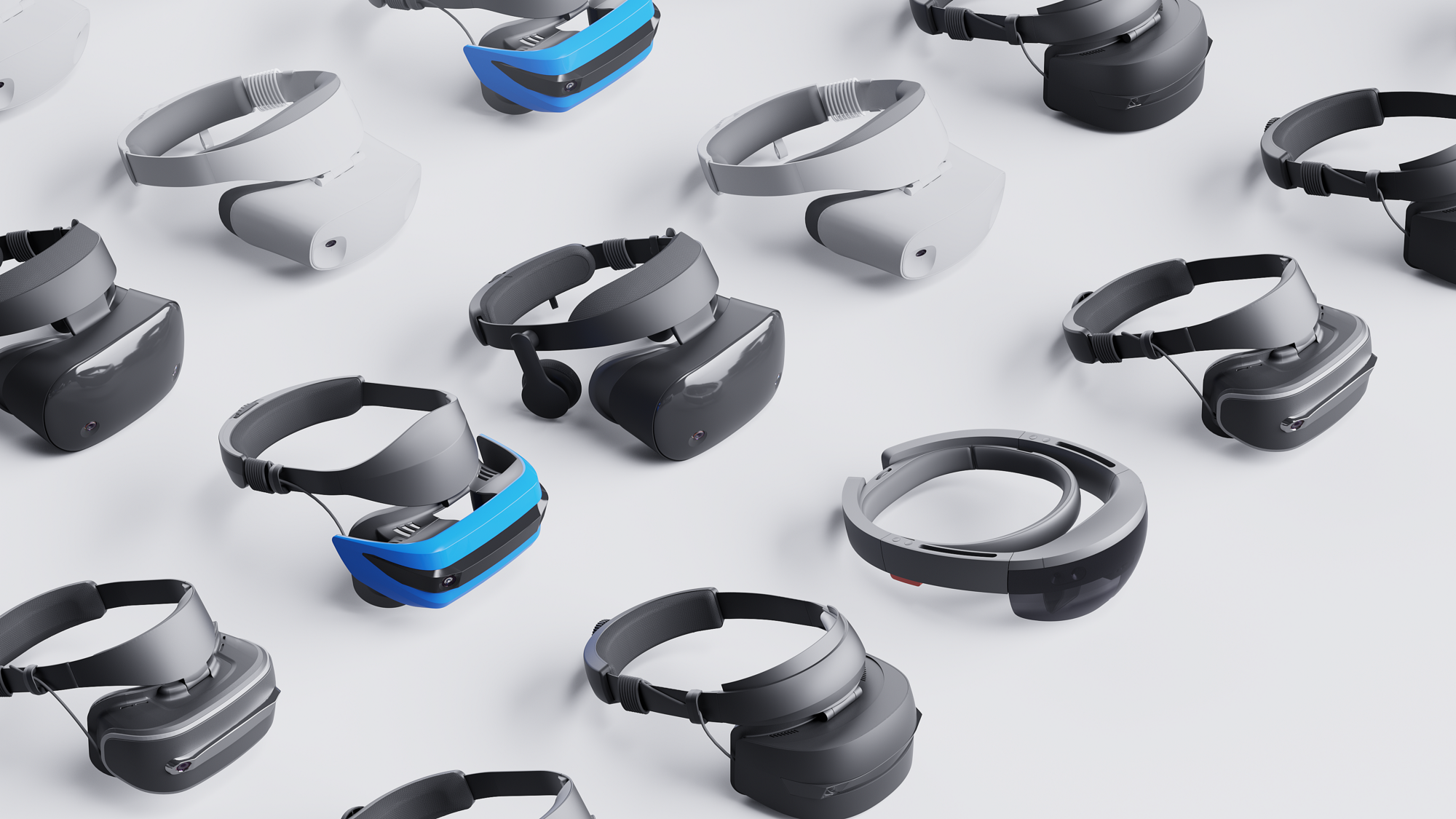
While Microsoft chose the term “Mixed Reality” for its initial headsets, these are only VR enabled. Hence “Windows Mixed Reality” labeled range of headsets are similar to the HTC Vive, Oculus Rift or Sony Playstation VR, and many manufacturers are selling bundles that include touch controllers, the main difference with the competitor being that the headsets do not require separate sensors.
The concept of Mixed Reality is truly exciting, as it is a mean to improve human life in all its aspects. It is going to impact communication, entertainment, education, collaboration, machine learning.
The hardware is slowly getting there: it might not be as fast as we’d have hoped but will soon take over and it’s one of the most exciting trends to look after to in the years to come.
Share on facebook
Share on google
Share on twitter
Share on linkedin
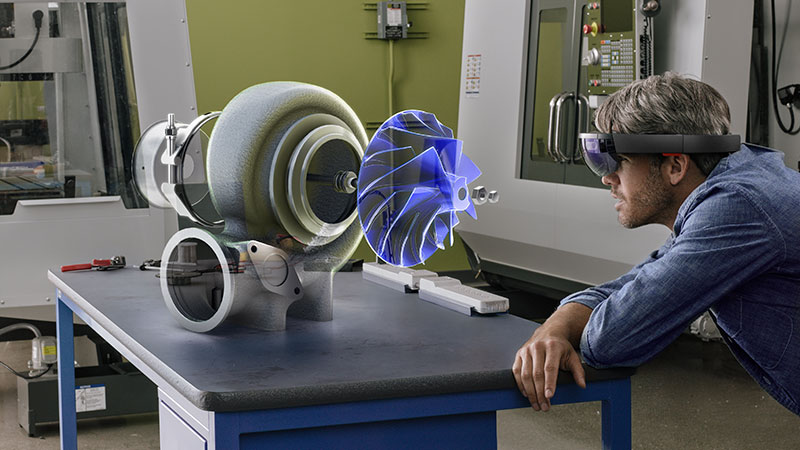
No Comments.